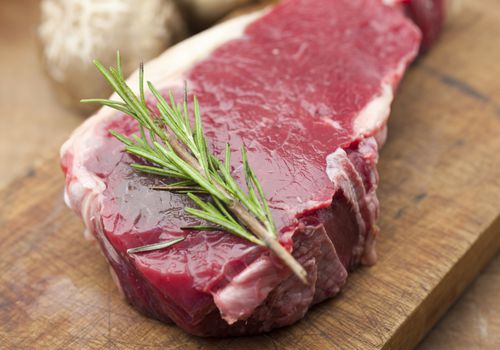Table of Contents
Raising Bison For Meat
North American consumers tend to think of bison meat as an alternative to beef with strong links with their own heritage. The role of bison meat as an alternative red meat was clear after the bovine spongiform encephalopathy (BSE) crisis in 2003 when Canadian per capita consumption of bison meat increased while beef consumption decreased.
However, based on a study evaluating the willingness of consumers to pay for bison attributes, the bison industry needs to focus on providing a satisfactory eating experience, as the heritage and health attributes would not be enough to compete with other available meats. Furthermore, price is the most important variable for consumers, more important than attributes such as fat content, tenderness, or ease to cook.
Bison meat is usually compared with beef to portray its beneficial attributes. Within the bison industry itself, grain- and grassfed bison are also compared, due to the perception of variations in quality and composition from different production systems. Nutritional guides from Canada (Health Canada, 2010) and the USA show lean and ground bison as having less fat than beef (2.4 and 7.2 g of fat per 100 g of lean and ground bison meat, respectively, vs. 8.1 and 10.0 g of fat per 100 g of lean and ground beef, respectively).
Cholesterol content seem to be similar for both meats, with some differences between calculations from Health Canada (~80 mg per 100 g of meat) and the USDA (~60 mg per 100 g of meat). More comprehensive studies have reported low amounts of fat in lean meat from grass-fed beef and bison (~1 g per 100 g of meat), with greater fat content in grainfed beef (~3 g per 100 g of meat) than in grain-fed bison (~2 g per 100 g of meat).

Furthermore, the least concentrations of cholesterol were found in meat from grass-fed bison (~44 mg per 100 g of meat). These values usually refer to the denuded longissimus muscle, used as a reference for meat quality studies. Fat content from specific retail cuts from bison carcasses can actually ranges between 1.5 g per 100 g (bottom roll) and 4.6 g per 100 g (blade).
Fat composition also seems to differ between bison meat and beef from different production systems. Bison meat (longissimus muscle) has a greater content of polyunsaturated fatty acids than beef, from both grass- (15.5 vs. 9.5% of total intramuscular fat) and grain-fed (10.7 vs. 5.0% of total intramuscular fat) animals (Rule et al., 2002). These differences were similar in other muscles. In addition, according to Health Canada, the calorie content of bison rib eye, lean only raw (116 kcal per 100 g) is less than beef (165 kcal per 100 g) and only slightly greater than raw, skinless chicken breast (112 kcal per 100 g). Finally, iron content has been reported to be greater in bison meat than in beef.
Therefore, nutritional facts can be used to promote bison meat as an alternative source of protein in human diets. Moreover, consumers seem to be aware of these differences and, together with its image of being a natural, safe product and its heritage as a North American icon, this may be the reason
for the increase in consumption of bison meat during the last decade. However, price, supply, and eating experience need to be considered to expand the market share of bison meat.
Fresh meat marketing opportunities
Bison meat is darker than beef, and color stability is a limitation to the expansion of fresh meat marketing. Although traditional dark cutting (high ultimate pH arising from prolonged pre-slaughter stress) may occur in bison, bison do have an inherently darker meat color due to differences in muscle fiber type and resulting greater pigment content. Bison meat color is also consistently unstable (early browning) under retail aerobic packaging conditions. The rapid pigment oxidation and surface discoloration mechanisms are not well understood.
In a comparative study characterizing the myoglobin protein between bison and beef, Joseph et al. determined that bison and beef had 100% amino acid sequence similarity and exhibited similar oxidation kinetics and thermostability; consequently, the rapid discoloration in bison meat could not be attributed to biochemistry of bison myoglobin. Variations in the balance between antioxidant–prooxidant components in the sarcoplasm could induce lipid oxidation and cause meat discoloration.
In addition, the greater PUFA content in bison could be susceptible to oxidation and generate reactive secondary oxidation products such as 4-hydroxy-2-nonenal (HNE), which accelerates myoglobin oxidation and subsequent meat discoloration. However, the role of HNE on bison color has not been evaluated yet.
Article Related Questions:
- How many acres do you need per bison?
- Are bison hard to raise?
- Is raising bison profitable?
- How much does it cost to raise bison?
- Why is Bison so expensive?
